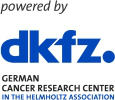Description
Glioma cells form synaptic connections with neurons, facilitating tumor progression and therapeutic resistance, yet the microenvironmental drivers of this synaptogenesis remain unclear. To investigate the mechanisms regulating neuron-glioma connectivity, we developed ElectroGenomics, an integrative spatial electrophysiology and transcriptomics approach combining high-density multielectrode array (HD-MEA) recordings, spatial transcriptomics, retrograde tracing, and graph-based network analysis. Applying this framework across human cortical slice cultures and murine glioma models, we found that tumor infiltration induces localized peritumoral hyperexcitability alongside inflammatory activation of microglia. In particular, inflammatory SPP1+/TREM2+ microglia, resembling damage-associated states observed in stroke and trauma, were found to drive BDNF-mediated synaptogenesis and facilitate neuron-tumor network formation through close spatial interactions with NPC/OPC-like tumor cells and sprouting neurons. Using optogenetic stimulation of cortical neurons in a patient-derived xenograft model, we confirmed that increased neuronal activity promotes the recruitment and activation of SPP1+ microglia specifically within the tumor-infiltrative regions. Pathway analysis further identified STAT3 signaling as a central driver of this inflammatory microglial phenotype. Pharmacological inhibition of STAT3 signaling or depletion of microglia significantly disrupted neuron-glioma connectivity and reduced neural circuit integration in human neocortical slice models. Complementary functional calcium imaging demonstrated that STAT3 inhibition led to decreased intratumoral signaling and diminished neuron-glioma synapse formation. Together, our study identifies inflammatory SPP1+/TREM2+ microglia as key regulators of neuron-glioma synapse formation and highlights the STAT3 pathway as a promising therapeutic target to disrupt glioma integration into brain circuitry.
| Preferred type of presentation |
|---|

